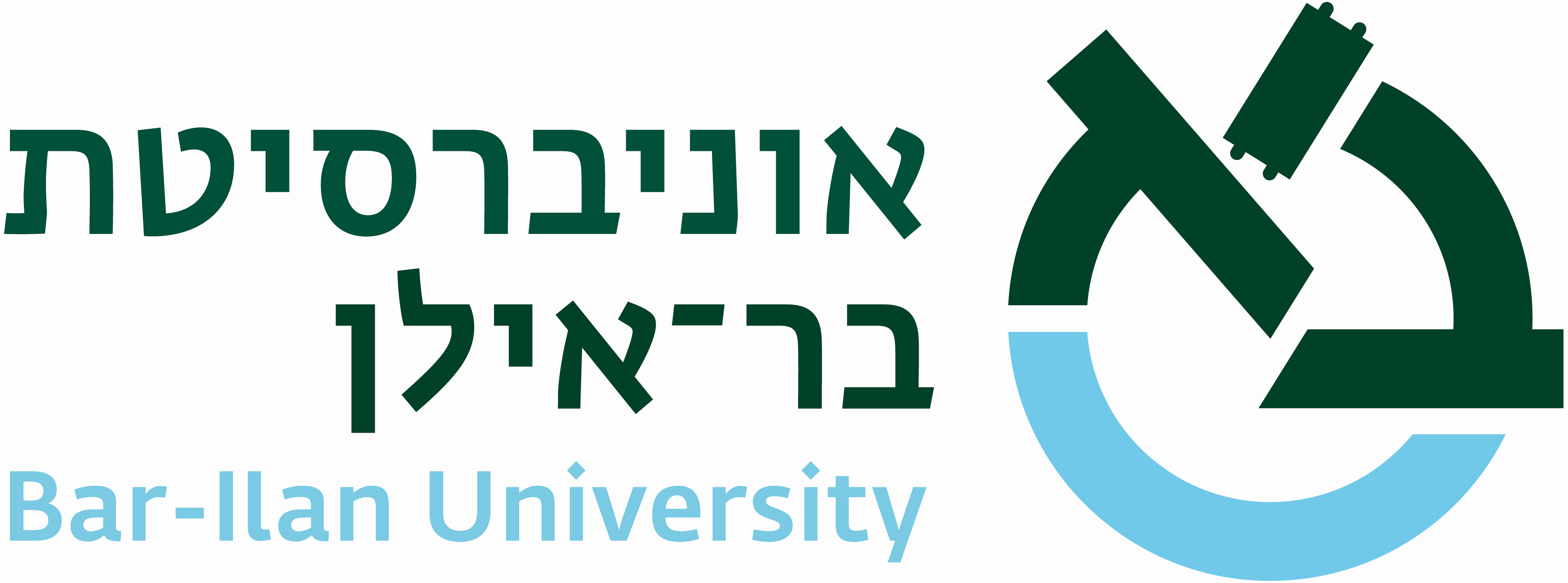Algebra, Geometry, Dynamics 2025
Bar-Ilan University
Monday, Nov. 10, 2025, Computer Science building (503), entrance floor
|
| 10:15-11:05 | Zlil Sela (Hebrew U) | Varieties over free associative algebras (abstract) |
| 11:05-11:20 | Coffee break |
| 11:20-12:10 | Pavel Gvozdevsky (Bar-Ilan U) | Abstract isomorphisms of isotropic algebraic groups over rings (abstract) |
| 12:20-13:10 | Rostislav Grigorchuk (via Zoom) (Texas A&M) | A hunt for spectral gaps (abstract) [watch] |
| 13:10-14:30 | Lunch |
| 14:30-15:20 | Yuri Zarhin (Penn State) | Jacobians and intermediate Jacobians with additional symmetries (abstract) [watch] |
| 15:30-16:10 | Evelina Daniyarova (Sobolev Inst Math) | Boris Plotkin's Logical Geometry and Theory of Interpretations (abstract) [watch] |
| 16:15-17:05 | Be'eri Greenfeld (via Zoom) (CUNY) | How complicated can words be? (abstract) [watch] |
Tuesday, Nov. 11, 2025, Computer Science building (503), entrance floor
|
| 10:00-10:50 | Yuri Gurevich (U Michigan) | What is an algorithm? (abstract) |
| 10:50-11:40 | Shmuel Weinberger (U Chicago) | Morse complexity of homology classes (abstract) [watch] |
| 11:40-12:10 | Coffee break |
| 12:10-13:00 | Alex Lubotzky (Weizmann Inst) | Uniform stability of high-rank Arithmetic groups (abstract) [watch] |
| 13:00-17:00 | Winery excursion |
Wednesday, Nov. 12, 2025, Computer Science building (503), entrance floor
|
| 11:00-11:50 | Arkady Tsurkov (U Rio Grande do Norte) | Categories and functors of universal algebraic geometry; and automorphic equivalence of algebras (abstract) [watch] |
| 11:50-12:10 | Coffee break |
| 12:10-13:00 | Agatha Atkarskaya (via Zoom) (Guangdong-Technion) | n-Engel groups for large n (abstract) [watch] |
| 13:00-13:25 | Grigory Mashevitzky (Ben Gurion U) | Non elementary and quasi-elementary inclusive varieties of groups and semigroups (abstract) [watch] |
| 13:25-14:30 | Lunch |
| 14:30-15:20 | Alexei Miasnikov (Stevens Institute) | Rigidity, coordinatization, and Plotkin's problems (abstract) [watch] |
| 15:25-16:00 | Yasmine Fittouhi (Weizmann Inst) | The Geometry of the Nilfibre $\mathcal{N}$ (abstract) [watch] |
| 16:00-16:20 | Coffee break |
| 16:20-16:45 | Alexander Treyer (Sobolev Inst Math) | On the equational Noethericity for groups and graphs and Kotov's lemma. (abstract) [watch] |
| 16:50-17:40 | Andrei Rapinchuk (via Zoom) (U of Virginia) | On almost strong approximation in reductive groups (abstract) [watch] |
| 18:30-20:00 | Banquet |
Thursday, Nov. 13, 2025, Computer Science building (503), entrance floor
|
| 10:00-10:50 | Alexei Kanel-Belov (Bar-Ilan U) | Solution of an open problem from ICM 2022 on outer billiards (abstract) [watch] |
| 10:55-11:20 | Guy Blachar (Weizmann Inst) | When is an almost-solution, almost a solution? (abstract) [watch] |
| 11:20-11:40 | Coffee break |
| 11:40-12:30 | Ivan Shestakov (U Sao Paulo) | On simple Jordan superalgebras (abstract) [watch] |
| 12:35-13:10 | Misha Volkov (via Zoom) (Ekaterinburg) | An optimal Boolean triangular representation for Catalan semirings (abstract) [watch] |
| 13:10-14:20 | Lunch |
| 14:20-14:45 | Elena Aladova Chestakov (U Sao Paulo) | Equivalences of algebras in universal algebraic geometry (abstract) [watch] |
| 14:50-15:40 | Igor Rapinchuk (via Zoom) (Michigan State U) | Groups with good reduction and buildings (abstract) [watch] |
| 15:40-16:00 | Break |
| 16:00-16:50 | Efim Zelmanov (UCSD and SUSTech) | Infinite-dimensional Lie superalgebras. (abstract) [watch] |



